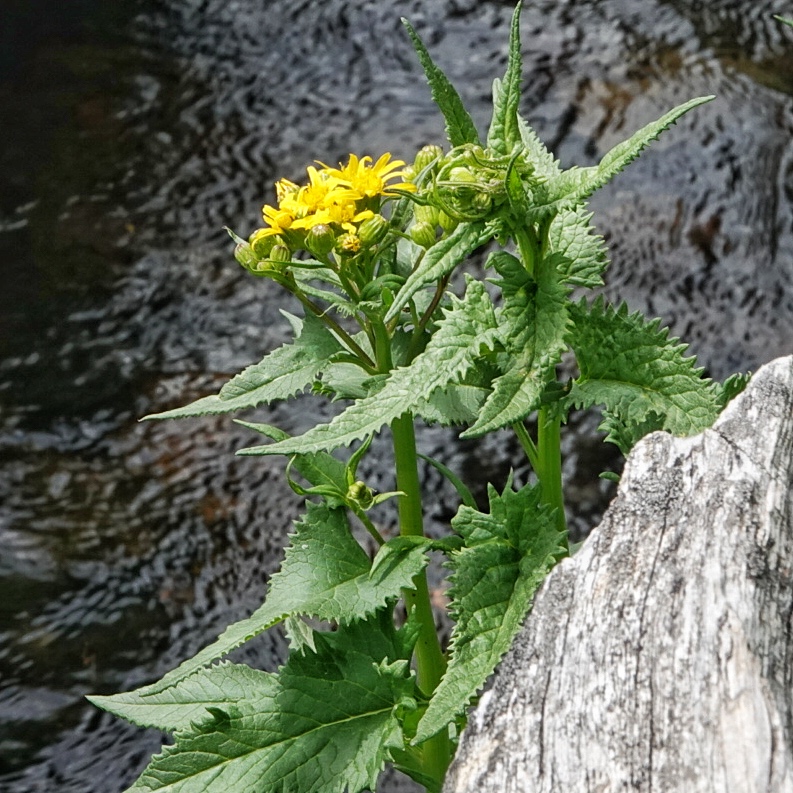
I have a confession to make. Not only am I not good with the members of Asteraceae, I often don’t even make the effort. I am trying to change that, and am having some success, but they are a tricky group, and it is hard to get past the attitude I developed out of frustration in the early 80s, when Craig Sondergaard first tried to teach me to identify wildflowers, that it is just SFC (Some Friggin’ Composite; for you youngsters, Asteraceae used to be known as Compositae).
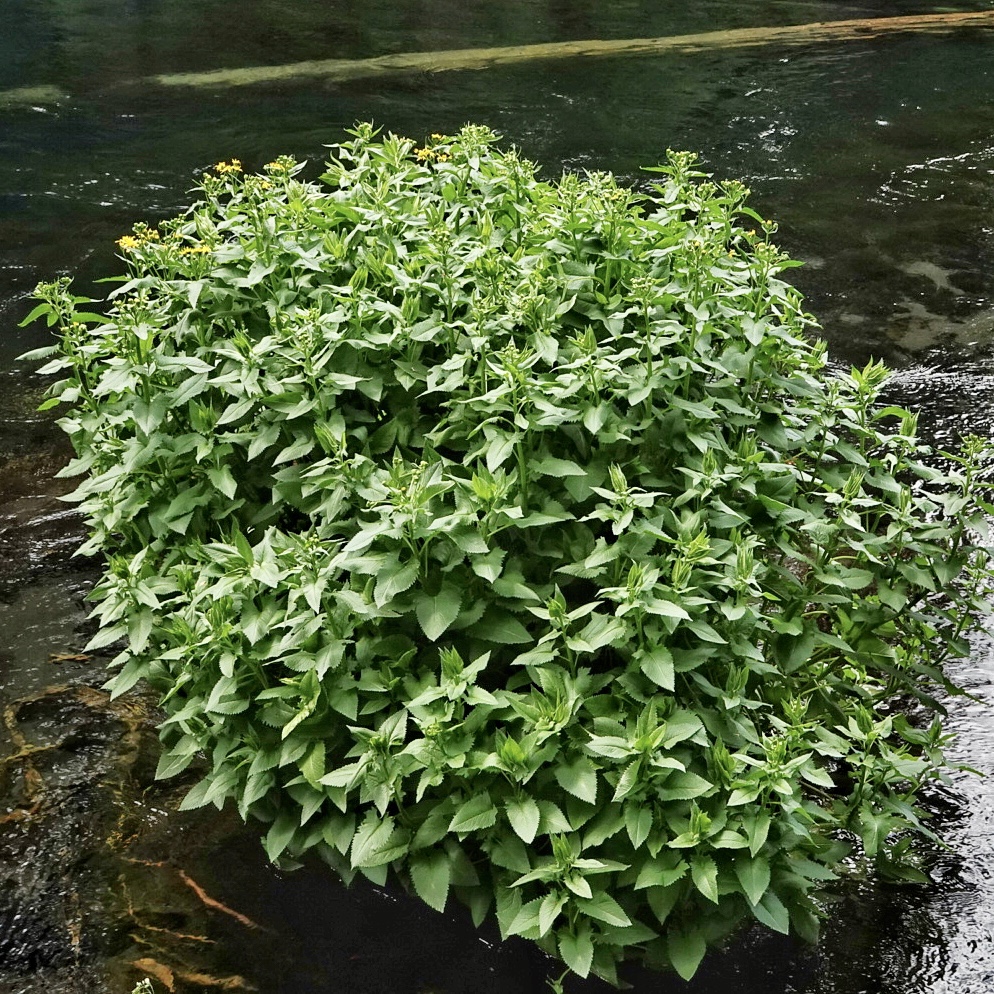
I have been particularly remiss when it comes to the genus Senecio (groundsels, ragworts), because there is a bewildering array of similar species. But I committed myself to identifying this lovely plant, with its bright yellow flowers and interesting foliage, that I found growing, sometimes in profusion, along (and even in) the Metolius River. And I got very lucky that it was a surprisingly easy groundsel to identify, due to the habitat and the singularity of its dentate, triangular leaves.
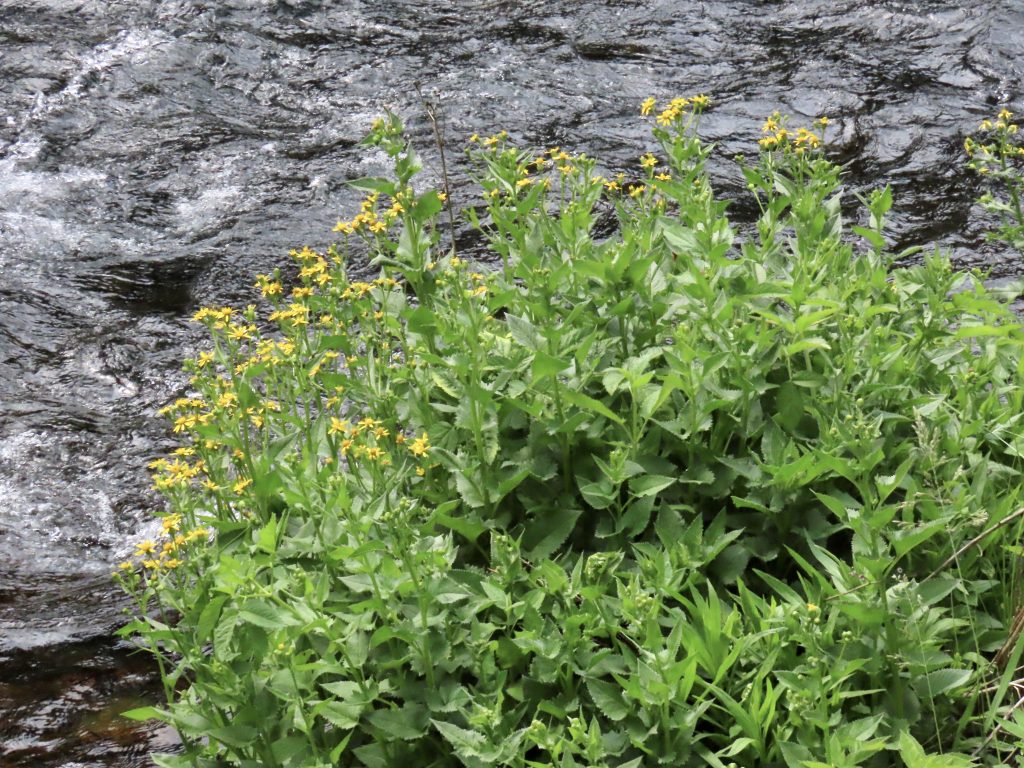
Arrowleaf groundsel contains many pyrrolizidine alkaloids and was never considered to be a food source for humans. But it was used by some indigenous cultures to relieve chest pains, and some pyrrolizidine alkaloid medicines have shown efficacy at treating angina. But those, of course, are purified and dosage regulated, and use of this plant for medicinal purposes is not recommended. The roots and flowers are known to be poisonous to mammals, and preventing depredation is undoubtedly why production of these chemicals was selected for by evolution.
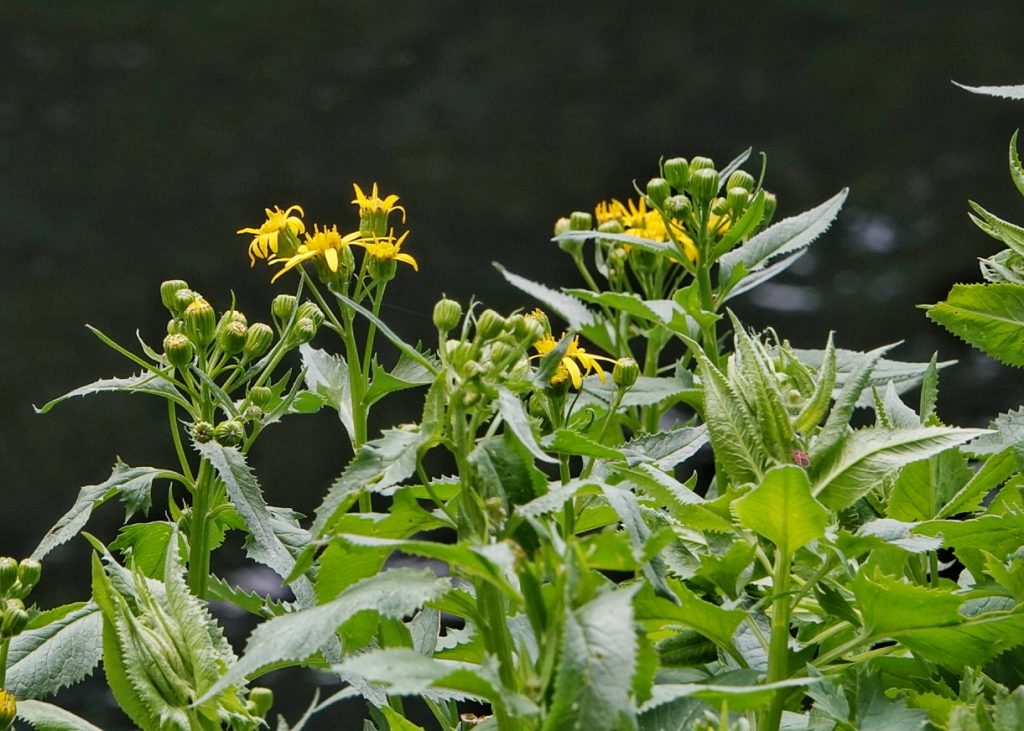
Description-Tall (up to 5’) clusters of stems with yellow flowers at the end; leaves up to 8” long, ± same size bottom to top, coarsely toothed and distinctly triangular; cluster of yellow flowers with 8 rays.
Similar species-Other Senecio have leaves that are lobed to pinnatifid, or they are ovate to elliptic to lanceolate; in our region only S. triangularis has distinctly triangular leaves.
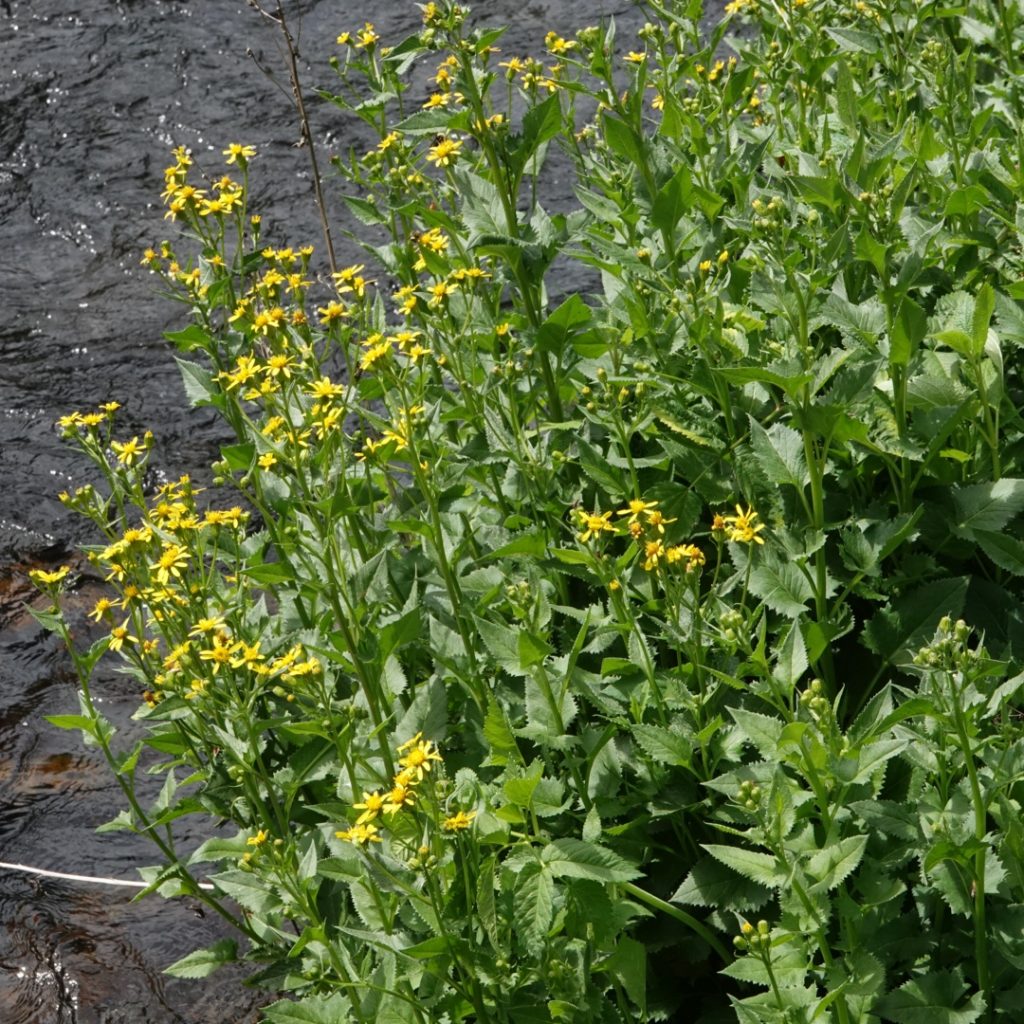
Habitat-Damp open woodlands and forested, rocky streams in montane areas; 500-10,000’ elevations.
Range-Western North America; region wide in appropriate habitat
Reproductive timing– Blooms May to September
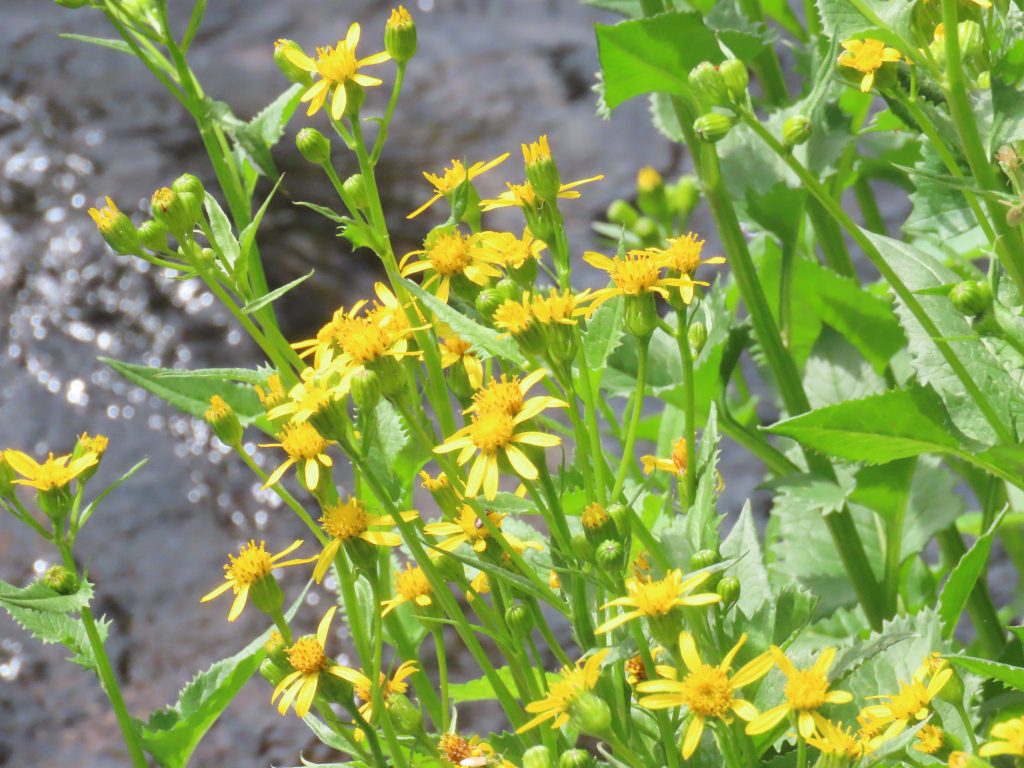
Eaten by-The flea beetles Longitarsus ganglbaueri, and L. jacobae are known to feed on this plant as larvae and as adults, and there are several other leaf beetles (Chrysomelidae) that are generalist Senecio feeders, as well as a number of stinkbugs (Pentatomidae) and Lepidoptera. Deer and elk are said to browse this before it flowers; my friend Michael Palmer pointed out that larvae of the fruit fly Trypeta flaveola are known to mine the leaves of this species.
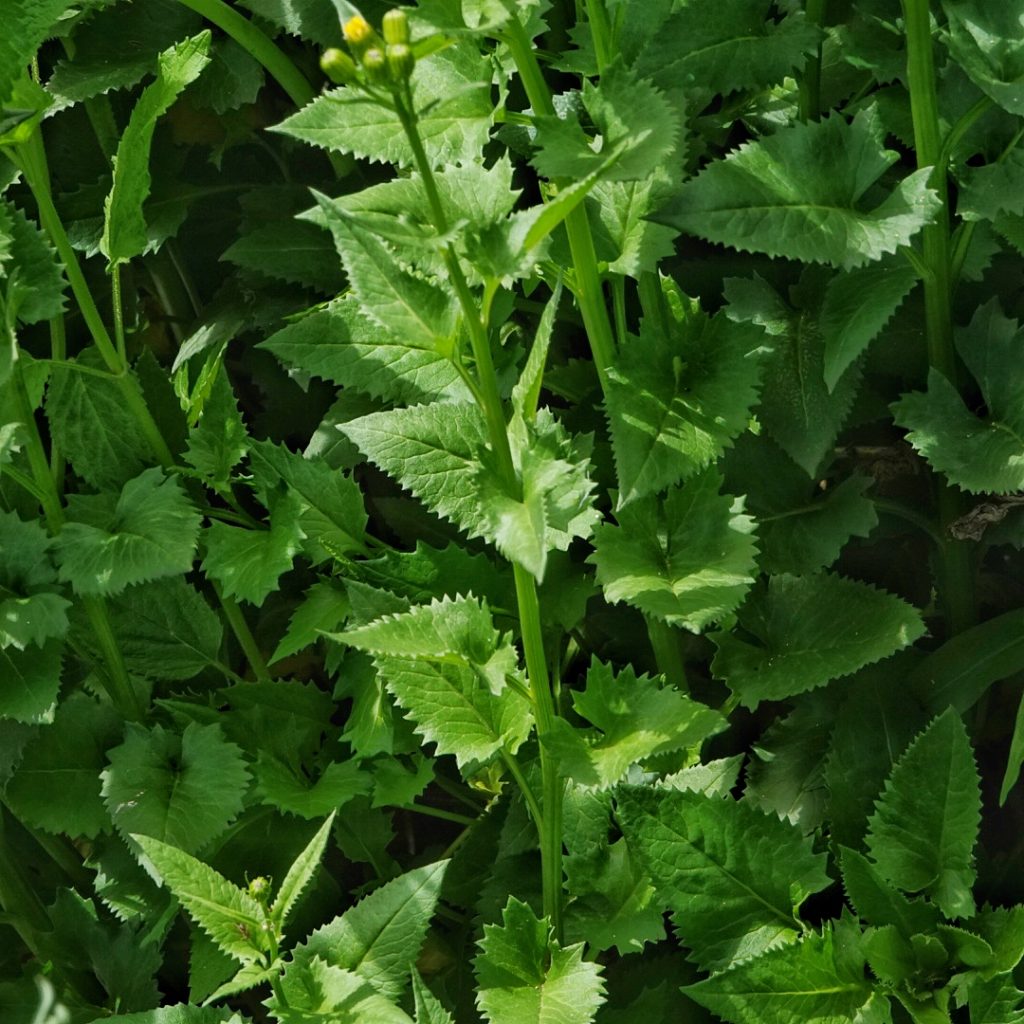
Etymology of names–Senecio is from the Latin for ‘old man’, and refers to the beard of long white hairs (pappi) that are attached to the seeds. It is also the Latin word for groundsel. The specific epithet triangularis refers to the triangular shape of the leaf.
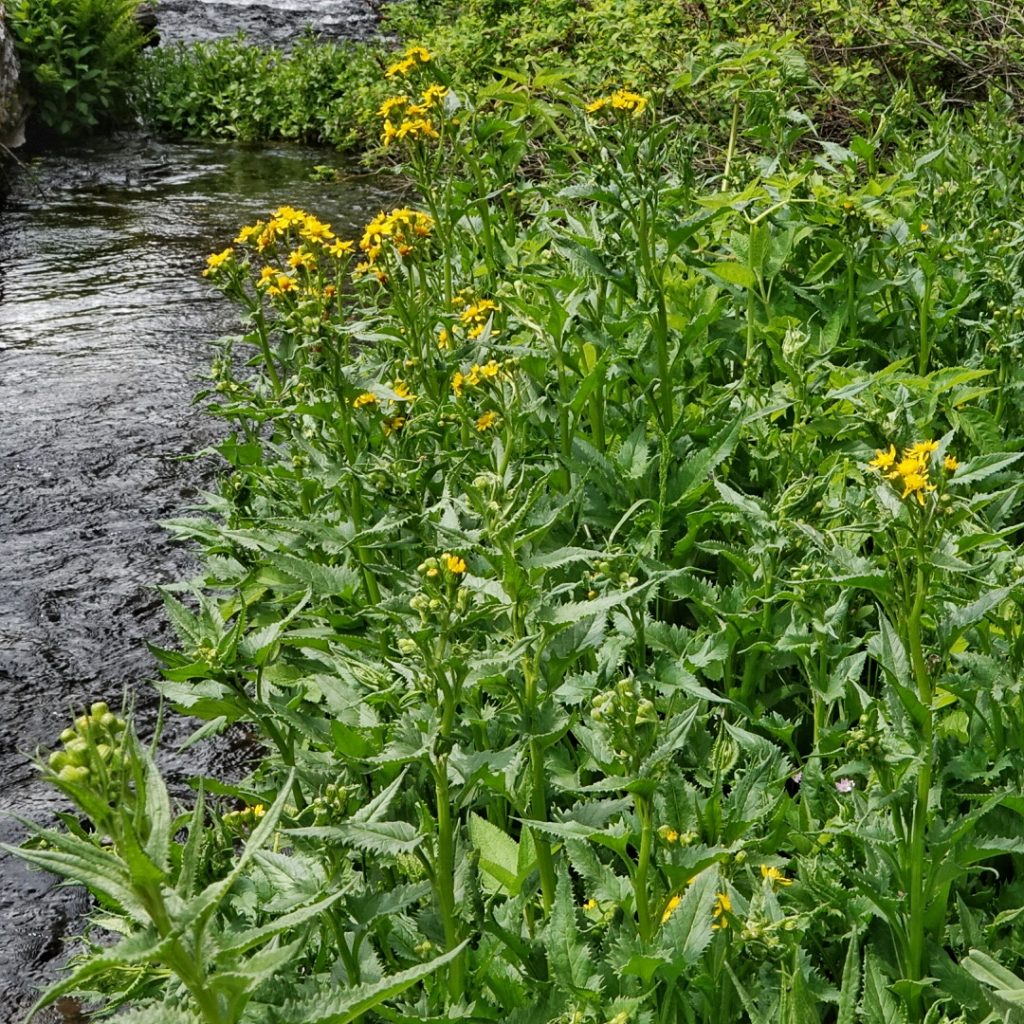
OregonFlora Senecio triangularis
http://montana.plant-life.org/cgi-bin/species03.cgi?Asteraceae_Seneciotriangularis
https://mpgnorth.com/field-guide/asteraceae/arrowleaf-groundsel
http://www.efloras.org/florataxon.aspx?flora_id=1&taxon_id=250067515
Senecio triangularis | Arrowleaf Groundsel | Wildflowers of the Pacific Northwest
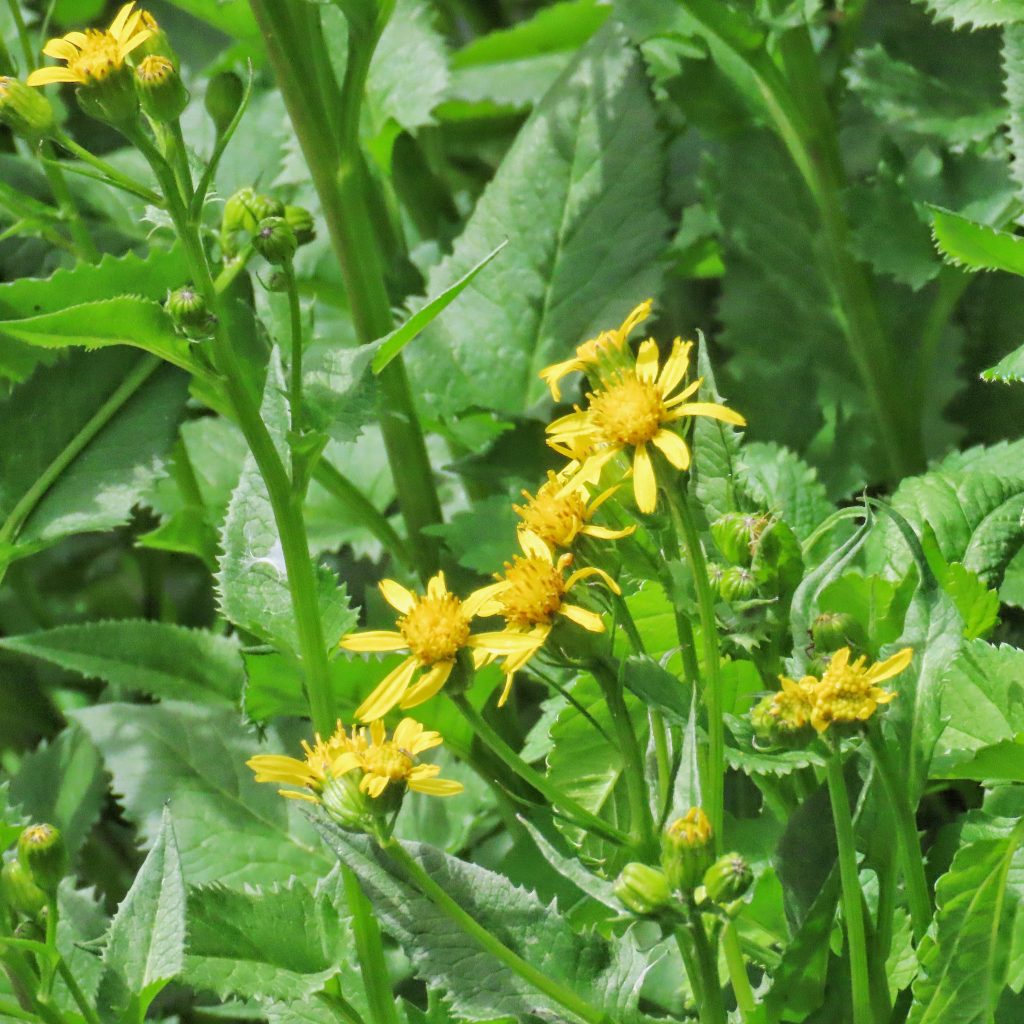
1 thought on “Senecio triangularis (Arrowleaf Groundsel)”